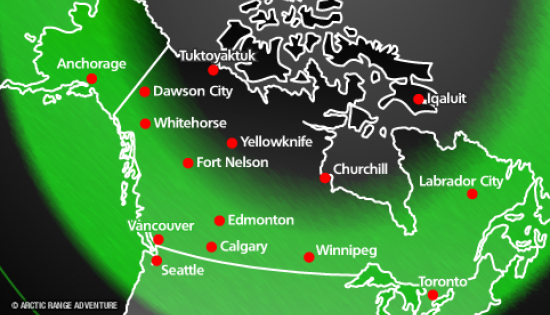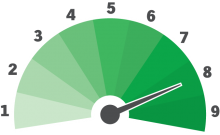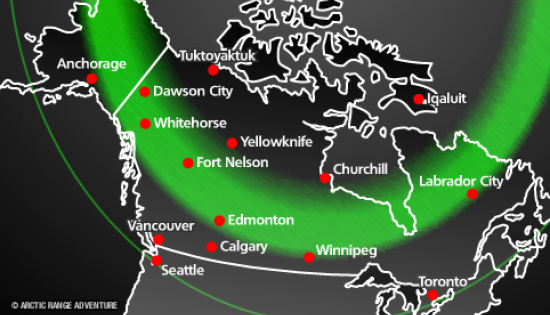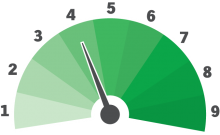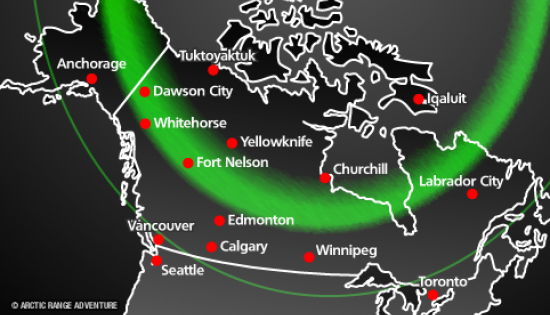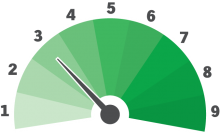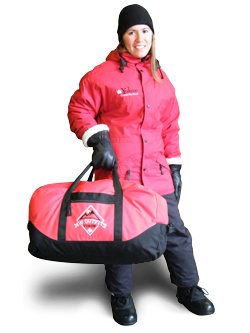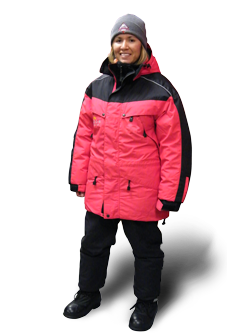We do not offer any rental cameras, but we offer a photo service and rental tripod. If you do not want to bring big camera, our Aurora guides will take your photo with northern lights and you can choose to purchase it if you like it.
FAQ
Are there any rental camera services?
How long do the northern lights last?
Anywhere from 10 minutes to all night long, depending on the magnitude of the incoming solar wind. "Coronal holes" consistently produce nice auroras but big solar flares and CMEs-coronal mass ejections are responsible for global-wide aurora displays…the BIG shows!
What is a famous food in Whitehorse?
Many restaurants serve local food like Arctic Char which comes from the arctic area. Also, meats like bison and reindeer are served as part of traditional meals. In the very far north you can also expect to taste traditional indigenous meals.
Three Day - Aurora Weather Forecast
Whitehorse (Canada)
Yukon Climate
| Month | Jan | Feb | Mar | Apr | May | Jun | Jul | Aug | Sep | Oct | Nov | Dec | Year |
|---|---|---|---|---|---|---|---|---|---|---|---|---|---|
| Record high °C (°F) | 10.0 (50) |
11.7 (53.1) |
16.8 (62.2) |
21.8 (71.2) |
34.1 (93.4) |
34.4 (93.9) |
33.2 (91.8) |
31.6 (88.9) |
26.7 (80.1) |
19.3 (66.7) |
13.3 (55.9) |
10.6 (51.1) |
34.4 (93.9) |
| Average high °C (°F) | −11.0 (12.2) |
−7.7 (18.1) |
−0.7 (30.7) |
6.6 (43.9) |
13.5 (56.3) |
19.1 (66.4) |
20.6 (69.1) |
18.5 (65.3) |
12.1 (53.8) |
4.2 (39.6) |
−6.0 (21.2) |
−8.5 (16.7) |
5.1 (41.2) |
| Daily mean °C (°F) | −15.2 (4.6) |
−12.7 (9.1) |
−6.3 (20.7) |
1.0 (33.8) |
7.3 (45.1) |
12.3 (54.1) |
14.3 (57.7) |
12.6 (54.7) |
7.2 (45) |
0.5 (32.9) |
−9.4 (15.1) |
−12.5 (9.5) |
−0.1 (31.8) |
| Average low °C (°F) | −19.2 (−2.6) |
−17.6 (0.3) |
−11.9 (10.6) |
−4.6 (23.7) |
1.0 (33.8) |
5.6 (42.1) |
8.0 (46.4) |
6.7 (44.1) |
2.1 (35.8) |
−3.2 (26.2) |
−12.9 (8.8) |
−16.5 (2.3) |
−5.2 (22.6) |
| Record low °C (°F) | −56.1 (−69) |
−51.1 (−60) |
−42.2 (−44) |
−30.6 (−23.1) |
−12.9 (8.8) |
−6.1 (21) |
−2.2 (28) |
−8.3 (17.1) |
−19.4 (−2.9) |
−31.1 (−24) |
−47.2 (−53) |
−48.3 (−54.9) |
−56.1 (−69) |
| Average mm (inches) | 17.8 (0.701) |
11.8 (0.465) |
10.3 (0.406) |
7.0 (0.276) |
16.3 (0.642) |
32.4 (1.276) |
38.1 (1.5) |
35.8 (1.409) |
33.3 (1.311) |
23.2 (0.913) |
20.1 (0.791) |
16.3 (0.642) |
262.3 (10.327) |
| Average rainfall mm (inches) | 0.3 (0.012) |
0.0 (0) |
0.0 (0) |
1.2 (0.047) |
14.3 (0.563) |
32.4 (1.276) |
38.1 (1.5) |
35.5 (1.398) |
29.0 (1.142) |
8.8 (0.346) |
1.0 (0.039) |
0.4 (0.016) |
160.9 (6.335) |
| Average snowfall cm (inches) | 25.4 (10) |
18.3 (7.2) |
14.8 (5.83) |
7.2 (2.83) |
2.0 (0.79) |
0.0 (0) |
0.0 (0) |
0.3 (0.12) |
4.7 (1.85) |
18.6 (7.32) |
27.0 (10.63) |
23.5 (9.25) |
141.8 (55.83) |
| Average precipitation days (≥ 0.2 mm) | 11.2 | 8.3 | 6.4 | 4.4 | 8.0 | 10.9 | 13.5 | 12.5 | 11.9 | 11.5 | 11.5 | 11.2 | 121.2 |
| Average rainy days (≥ 0.2 mm) | 0.2 | 0.1 | 0.1 | 1.1 | 7.5 | 10.9 | 13.5 | 12.4 | 11.0 | 5.1 | 0.8 | 0.3 | 62.9 |
| Average snowy days (≥ 0.2 cm) | 11.9 | 9.1 | 7.0 | 3.8 | 1.2 | 0.0 | 0.0 | 0.3 | 1.5 | 7.9 | 12.4 | 12.2 | 67.4 |
| Average relative humidity (%) | 72.2 | 64.5 | 51.8 | 42.1 | 38.2 | 39.9 | 46.0 | 47.9 | 54.5 | 64.2 | 75.2 | 74.7 | 55.9 |
| Mean monthly sunshine hours | 43.8 | 105.5 | 163.2 | 238.5 | 251.1 | 266.7 | 247.6 | 226.5 | 132.7 | 84.9 | 39.8 | 26.8 | 1,827.1 |
| Percent possible sunshine | 21.4 | 41.6 | 44.8 | 54.4 | 46.8 | 46.9 | 43.8 | 46.4 | 34.1 | 27.0 | 17.8 | 14.9 | 36.7 |

